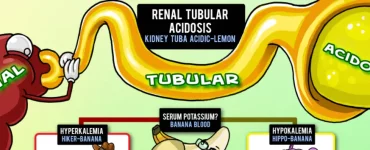Question banks, practice tests, study tools, and more! Want advice on how to prepare for the Step 2 CK? Read our list of the top USMLE Step 2 study resources used by medical students nationwide.

USMLE Step 2 CK Resources
Get your USMLE Step 2 CK prep off to the right start with the right study tools. The purpose of compiling these USMLE Step 2 CK resources is to help you find your favorite one! What works for you may not work for others and vice versa. Let these guide your study plan, and if needed, come back to experiment with other resources in this list.
TrueLearn
TrueLearn’s SmartBank for the USMLE Step 2 has tons of practice questions. It’s a widely treasured USMLE Qbank among med students. Written by board-certified physicians, topics are mapped to the exam outline so you can know your stuff. Utilize over 4,100 practice questions, custom quizzes in USMLE format, and performance metrics to see how you’ll do on exam day. It’s terrific exam prep and even offers a first-time pass guarantee.
Picmonic
You should use Picmonic for Step 2 CK even if you didn’t use it for Step 1. It’s one of the best Step 1 and 2 CK resources. Picmonic has over 2,000 need-to-know picture mnemonics for med students. So, every time you think of any med facts, your handy dandy picture mnemonics will pop into mind! In short 2-5 minute long videos, it’s convenient for Step 2 CK prep. Picmonic follows a learn, review, and quiz model so you can test your abilities. With a pass guarantee for the USMLE Step 2 CK, there’s no going wrong with this resource.
UWorld
UWorld is a popular question bank among medical students. Some pair it with other resources to maximize their studying. One helpful aspect of UWorld is that it has explanations for each question missed so you can review them. Explanations also contain thorough tables and graphs.
Kaplan
Kaplan Step 2 CK Qbank is also one of the major USMLE Qbanks out there. Kaplan tells you exactly where a topic or subject is located in the most popular review books. Kaplan also has a USMLE Step 2 CK practice question of the day for students.
NBME
NBME practice exams are made up of old exam questions, but students have to use them wisely as each exam costs $60. The exams have a total of 200 questions, and students do not get a three-digit score when finished. Students can access the NBME Free 120 to practice on the USMLE site.
USMLE World – Self-Assessment
There’s only one USMLE World Self-Assessment (UWSA). The NBME exam and UWSA are only half as long as the real thing, but with the latter, you’ll receive explanations of each question—even the ones you get correct. The explanations are similar to the UWorld Qbank’s!
Anki
Step 2 study materials should be easy to use on the go—especially as a med school student. Anki flashcards are perfect for making digital flashcards and reviewing them easily! Anki, like Picmonic, has a spaced repetition algorithm that will help you practice active recall and improve retention. You can create your own flashcard deck, use an existing deck like the AnKing Step 2 CK deck, or use the Picmonic add-on for Anki to easily review with picture mnemonics!
Additional USMLE Step 2 Study Materials
Need more Step 2 CK study materials? We’ve got ‘em. Let’s make your USMLE Step 2 prep well-planned and efficient with a few more resources you can try.
Step 2 CK Books
Master the Boards (MTB Step 2)
MTB Step 2 is a great high-yield review book. With flow charts, decision trees, and comparison tables, you’ll view broad topics at a glance. Plus, it features a patient safety chapter and tips on how to recognize incorrect answers. Readers enjoy the way information is presented precisely and directly.
First Aid for USMLE Step 2 CK

Everyone’s favorite book is First Aid for USMLE Step 2 CK! Make sure you get the latest edition for the most up-to-date info and enjoy concise summaries of more than 1,000 clinical topics. Students love this because it’s easy to read, comprehensive, and offers key facts and mnemonics.
Picmonic for Medicine Library
Picmonic’s medicine library has thousands of need-to-know medical facts repped through memorable picture mnemonics. Paired with unlimited quizzing, a mobile app for studying any time and place, and daily spaced repetition, you can review exactly what you need to when you need to! It’s a comprehensive library that pairs well with your favorite Qbank and review book. Plus, you can take advantage of Picmonic’s study scheduler to cover all the necessary material before your exam date. Start studying with these Picmonic playlists for Step 2 CK.
Taking the USMLE Step 2 CK in 2024: Frequently Asked Questions
How many hours per day to study for Step 2?
Your hours of studying per day may depend on your busy schedule. Most med students aim for about 4 to 6 hours a day. It may be best to break up these study hours into 2-hour chunks so you can study at the time and place that works for you.
What are the best USMLE Step 2 CK Resources?
Ultimately, there are plenty of resources out there for the USMLE Step 2 CK, but the resources provided in the blog are a good place to start. With a busy schedule, you’ll know what resources will help you study and others that aren’t up to par. If you’re open to hearing more suggestions for USMLE Step 2 resources, here are three more.
What do I bring to Step 2 CK?
Two things you absolutely need to bring to the Step 2 CK are a paper or electronic copy of your scheduling permit and a valid, government-issued photo ID. Make sure your ID isn’t expired and that the name on your scheduling permit appears exactly as it does on your ID. Otherwise, no personal items are allowed when you take the Step 2 CK.
Furthermore, you want to avoid making any exam day mistakes you might have made for the USMLE Step 1. For more information on what to do on your USMLE exam day, visit the USMLE website.
How long is Step 2?
Step 2 is a total of 9 hours long, broken into eight 60-minute blocks. You will have a 5-minute optional break after each section, and after section 4, an optional 45-minute lunch break.
How many questions on Step 2?
Within those eight 60-minute blocks, the amount of questions will vary, but won’t exceed 40. Overall, the USMLE Step 2 will not exceed 318 questions.
When do you take Step 2?
If you haven’t taken USMLE Step 1, do that first. You can use these success tips, but overall, taking Step 1 is great preparation for Step 2. You’re supposed to take Step 2 after your third year of medical school, and you must pass Step 2 prior to beginning your medical residency, so make sure you plan accordingly.
What’s the average Step 2 Score?
The minimum score to pass Step 2 CK is 214. In 2022-2023, the average Step 2 score was 248 with a deviation of 15.
How do I go about Step 2 registration?
You have to register for Step 2 through the National Board of Medical Examiners (NBME) if you’re a student or graduate of lCME-or COCA-accredited medical programs in the US or Canada or the Educational Commission for Foreign Medical Graduates (ECFMG) if you’re a graduate or student of a medical school located outside the U.S. and Canada. The Step 2 exam fees are $670 in 2024.
Download our mobile app and take Picmonic on the go!















